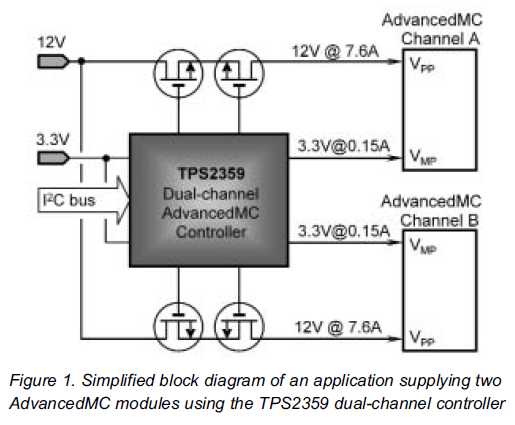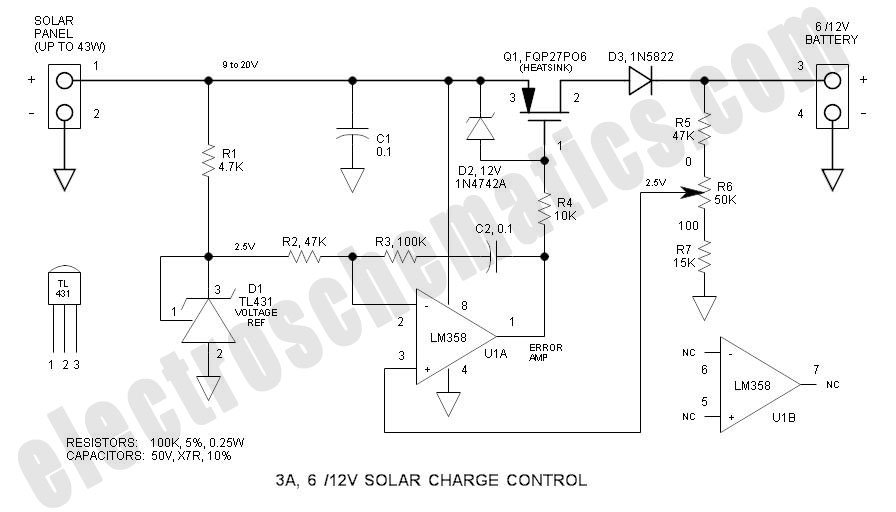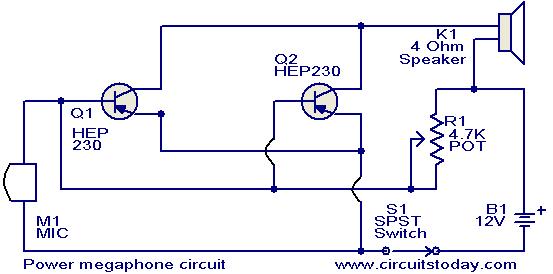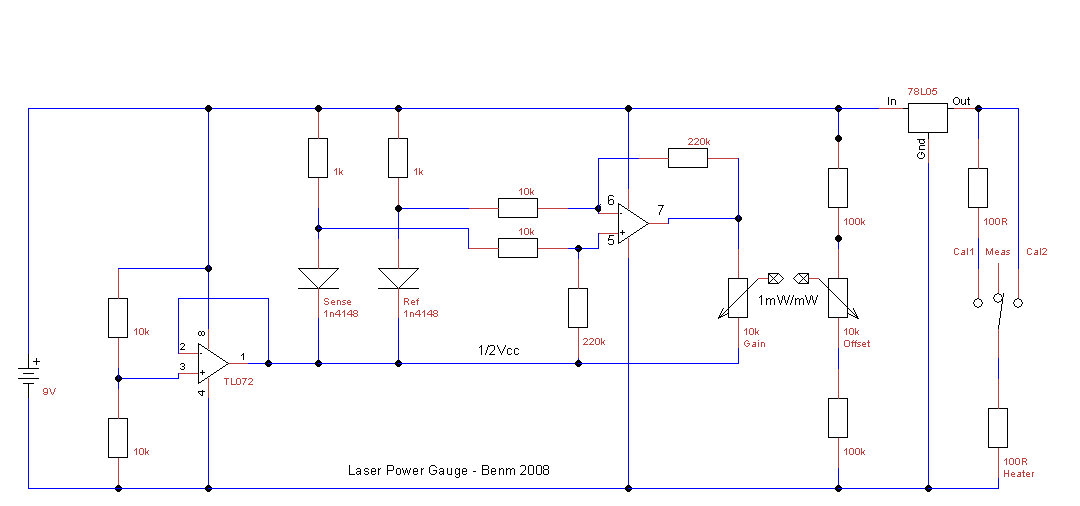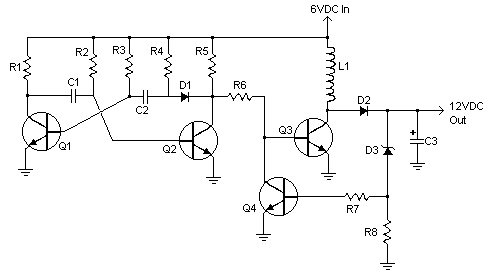
+5V + 12V boost power supply MAX761
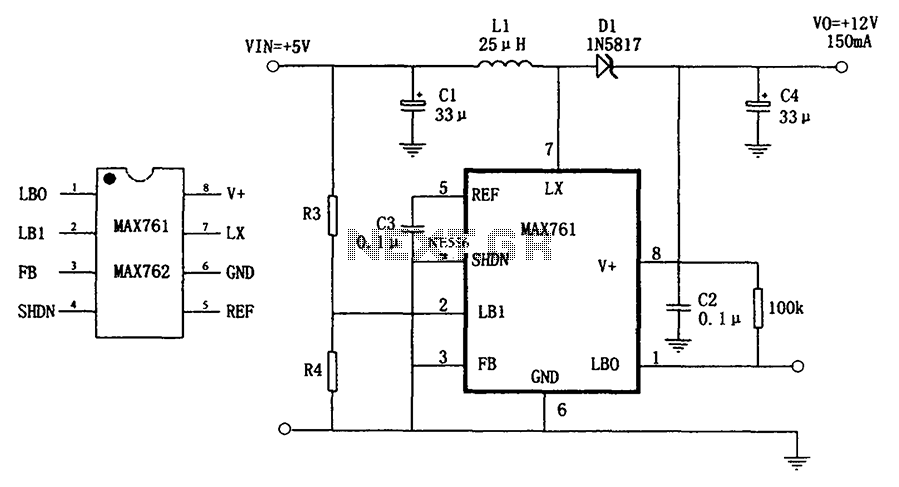
The circuit depicted in the figure illustrates an efficient, low-power step-up DC-DC converter, the MAX761, along with a few external components, which functions as a +5V to +12V boost power supply. Its characteristics include a conversion efficiency of 86% and a quiescent current of 110 µA. Additionally, it features a low battery voltage detection function, illustrated by resistors R3 and R4, which form a voltage divider. The resistor values are calculated using the empirical formula: R4 = R3 * (VTPIP / 1.5 - 1), where VTPIP represents the trigger voltage for detection.
The MAX761 is a high-efficiency DC-DC boost converter designed to provide a regulated output voltage from a lower input voltage. This converter is characterized by its ability to step up the voltage from +5V to +12V with a notable conversion efficiency of 86%. Such efficiency is essential in battery-operated devices, where minimizing power loss leads to extended battery life.
The quiescent current of 110 µA indicates the current drawn by the converter when it is not actively switching, which is relatively low, making it suitable for applications where power conservation is critical.
The low battery voltage detection feature is particularly useful for monitoring the health of the power supply. Resistors R3 and R4 form a voltage divider that scales down the battery voltage to a level suitable for comparison with a reference voltage. The empirical formula provided allows for the calculation of R4 based on the desired trigger voltage (VTPIP). This setup ensures that when the battery voltage drops below a certain threshold, the circuit can take appropriate action, such as shutting down or switching to a low-power mode to preserve battery life.
The implementation of the MAX761 in conjunction with these external components creates a robust power supply solution for various electronic applications, ensuring reliable performance while maintaining efficiency and monitoring capabilities. As shown in FIG grounds efficient, low-power step-up DC-DC converter MAX761 and a few external components, the + 5V + 12V boost power supply. Its characteristics are: the conve rsion efficiency of 86%; quiescent current of 110 A; has a low battery voltage detection function, the figure R3, R4 battery voltage detection resistor divider according to the general empirical formula: R4 R3 (VTPIP/1.5-1 ) is calculated, VTPIP to detect a trigger voltage.
The MAX761 is a high-efficiency DC-DC boost converter designed to provide a regulated output voltage from a lower input voltage. This converter is characterized by its ability to step up the voltage from +5V to +12V with a notable conversion efficiency of 86%. Such efficiency is essential in battery-operated devices, where minimizing power loss leads to extended battery life.
The quiescent current of 110 µA indicates the current drawn by the converter when it is not actively switching, which is relatively low, making it suitable for applications where power conservation is critical.
The low battery voltage detection feature is particularly useful for monitoring the health of the power supply. Resistors R3 and R4 form a voltage divider that scales down the battery voltage to a level suitable for comparison with a reference voltage. The empirical formula provided allows for the calculation of R4 based on the desired trigger voltage (VTPIP). This setup ensures that when the battery voltage drops below a certain threshold, the circuit can take appropriate action, such as shutting down or switching to a low-power mode to preserve battery life.
The implementation of the MAX761 in conjunction with these external components creates a robust power supply solution for various electronic applications, ensuring reliable performance while maintaining efficiency and monitoring capabilities. As shown in FIG grounds efficient, low-power step-up DC-DC converter MAX761 and a few external components, the + 5V + 12V boost power supply. Its characteristics are: the conve rsion efficiency of 86%; quiescent current of 110 A; has a low battery voltage detection function, the figure R3, R4 battery voltage detection resistor divider according to the general empirical formula: R4 R3 (VTPIP/1.5-1 ) is calculated, VTPIP to detect a trigger voltage.
